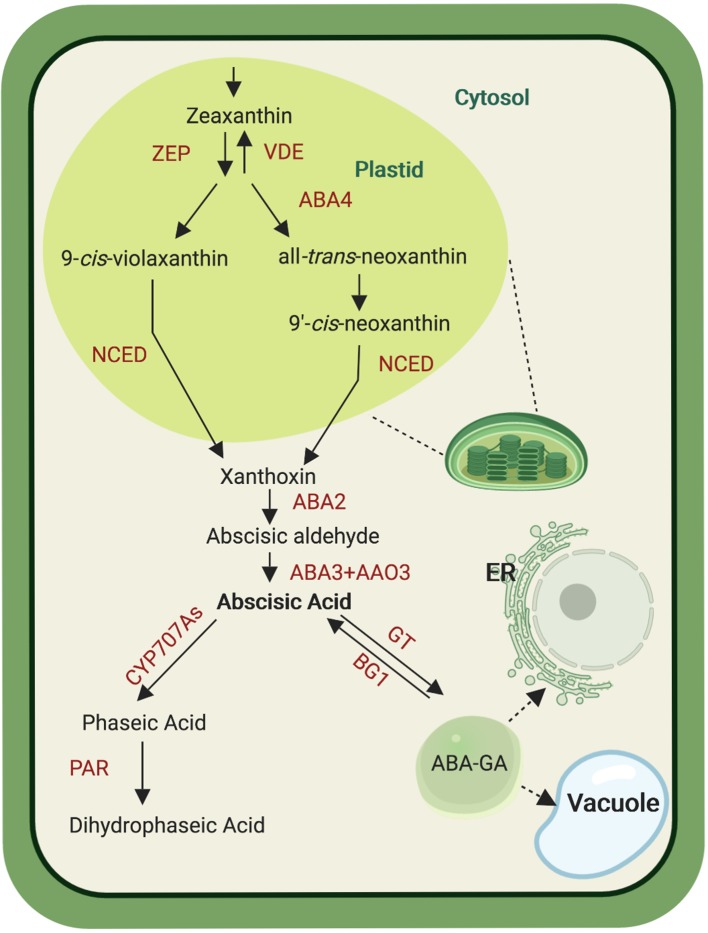Figure 1.
Abscisic acid (ABA) biosynthesis pathway. De novo ABA biosynthesis begins in plastid, catalyzed by several enzymes (ZEP, zeaxanthin epoxidase; VDE, violaxanthin de-epoxidase; ABA4, ABA-deficient 4; NCED, nine-cis-apoxicarotenoid-dioxygenase ) that convert zeaxanthin into xanthoxin. After transport into the cytosol, xanthoxin is subjected to oxidation steps mediated by three enzymes (ABA2, ABA-deficient 2; AAO3, abscisic aldehyde oxidase and ABA3, ABA-deficient 3) giving rise to ABA. Abscisic acid can be modified by CYP707A enzymes that yield phaseic acid (PA). The latter is the substrate of the PA reductase (PAR) that forms dihydrophaseic acid. Alternatively, ABA is glucosylated by ABA glucosyltransferase (GT) into ABA-GT that can be transported into the vacuole and the endoplasmic reticulum (ER). Abscisic acid–GT can be converted back into ABA by the glycosyl hydrolase BG1. Created with ‘Biorender’.

